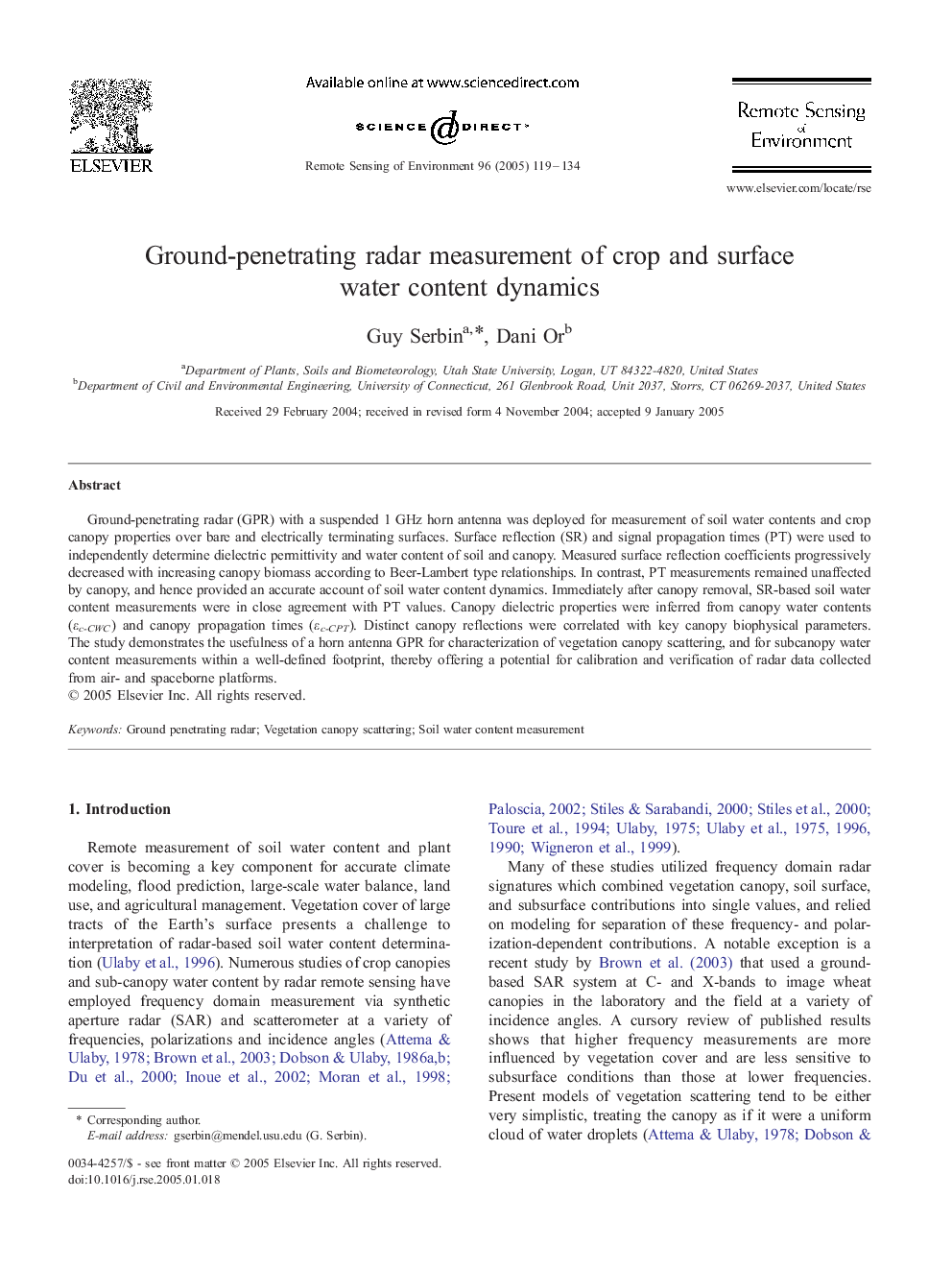| Article ID | Journal | Published Year | Pages | File Type |
|---|---|---|---|---|
| 10114245 | Remote Sensing of Environment | 2005 | 16 Pages |
Abstract
Ground-penetrating radar (GPR) with a suspended 1 GHz horn antenna was deployed for measurement of soil water contents and crop canopy properties over bare and electrically terminating surfaces. Surface reflection (SR) and signal propagation times (PT) were used to independently determine dielectric permittivity and water content of soil and canopy. Measured surface reflection coefficients progressively decreased with increasing canopy biomass according to Beer-Lambert type relationships. In contrast, PT measurements remained unaffected by canopy, and hence provided an accurate account of soil water content dynamics. Immediately after canopy removal, SR-based soil water content measurements were in close agreement with PT values. Canopy dielectric properties were inferred from canopy water contents (Éc-CWC) and canopy propagation times (Éc-CPT). Distinct canopy reflections were correlated with key canopy biophysical parameters. The study demonstrates the usefulness of a horn antenna GPR for characterization of vegetation canopy scattering, and for subcanopy water content measurements within a well-defined footprint, thereby offering a potential for calibration and verification of radar data collected from air- and spaceborne platforms.
Keywords
Related Topics
Physical Sciences and Engineering
Earth and Planetary Sciences
Computers in Earth Sciences
Authors
Guy Serbin, Dani Or,
